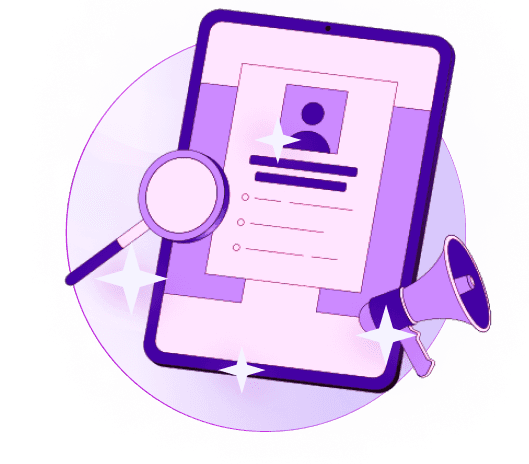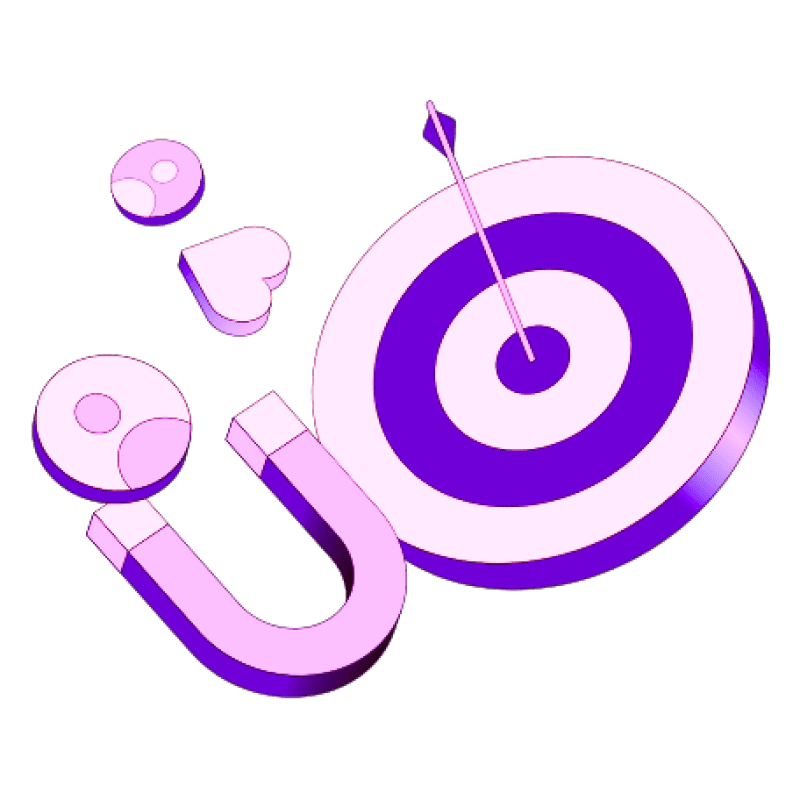Blogs
Articles

How to Automate Lead Generation for Better Sales Results
Businesses using marketing automation tools see a 451% increase in qualified leads on average - a fact that might surprise you.
Modern businesses need automated lead generation to scale their sales efforts. Traditional lead generation methods just don't cut it anymore - a staggering 97% of people ignore cold calls, and 44% of sales reps feel too overwhelmed to follow up with every lead. More companies now embrace lead generation automation tools to tackle these challenges.
This piece will show you the quickest way to automate lead generation - from capture systems to lead nurturing and process optimization. You'll get a clear roadmap that helps you implement automation and drive better sales results.
What is automated lead generation?
Automated lead generation uses technology to identify, attract, and nurture potential customers without constant manual work. Smart software and tools optimize the lead management process - from capturing prospects to qualifying them as sales-ready leads.
Automated lead generation takes away the hard work of finding and connecting with potential customers. Companies can focus on delivering real value while their digital systems continuously build the sales pipeline.
The process sets up digital workflows that:
Capture visitor information through online forms, landing pages, and smart pop-ups
Process and qualify leads based on specific criteria
Nurture prospects through individual-specific communication
Send qualified leads to sales teams at the right moment
The advantages go well beyond time savings. Companies using lead generation automation see a 451% increase in qualified leads on average. The system creates consistent communication, speeds up response times, and reduces friction throughout the sales funnel.
Continuous data management, targeted engagement, and individual-specific communication are the foundations of effective automated lead generation systems. These elements combine to turn website visitors into potential customers quickly.
Define Your Audience and Goals
Your automated lead generation system needs a clear target audience and goals. These elements shape your strategy's success.
Create detailed buyer personas
Buyer personas represent your ideal customers through market research and real data from your existing audience. These profiles take a closer look at behaviors, values, and decision-making processes that drive purchases.
You can create effective buyer personas by:
Speaking with current customers about their needs and buying process
Looking at your existing customer data to spot common traits
Adding demographics (age, income, education level) and psychographics (interests, values, lifestyle)
Writing down their pain points and challenges
Research shows creating detailed personas helps you understand customer motivations better. This knowledge leads to targeted campaigns with better results.
Segment your audience for better targeting
After developing personas, group them into specific subgroups to create tailored messages. Here are some effective segmentation strategies:
Demographic segmentation groups prospects by age, income, job type, and location. This method remains popular because it delivers results. Behavioral segmentation looks at what people buy, their purchase frequency, and buying motivations. Psychographic segmentation focuses on personality types, values, and attitudes. It separates family-oriented people from adventure seekers.
Set measurable lead generation goals
SMART (Specific, Measurable, Achievable, Relevant, Time-bound) goals create clarity and accountability in your team.
Start with your revenue targets and work backward to find your required lead numbers. To cite an instance, knowing your lead-to-customer conversion rate helps predict future sales accurately.
Keep track of KPIs at every stage of your lead generation process. Monitor metrics like conversion rates, click-through rates, and lead-to-sale ratios. This data shows which strategies work best and need improvement, helping you optimize your automated system.
Set Up Your Automated Lead Capture System
Let's build the foundation of your lead capture mechanism. A well-designed system needs components that work together naturally to collect visitor information.
Use landing pages with clear CTAs
Landing pages work as dedicated conversion points for your lead generation efforts. Unlike general website pages, good landing pages focus on one goal - capturing lead information. Your landing page needs a strong headline that shows clear value, minimal navigation to avoid distractions, and a compelling call-to-action.
Studies show that landing pages with one CTA convert better - adding multiple offers can decrease conversion rates by up to 266%. Your form should appear above the fold where visitors can see it right away. Use action-oriented language that creates urgency.
Deploy chatbots for 24/7 engagement
Chatbots have changed how we capture leads by talking to website visitors around the clock. These AI-powered tools start conversations, answer questions, and gather contact information automatically. Research shows 64% of consumers expect live answers, and 46% prefer online conversations over other channels.
Today's chatbots can qualify leads by asking specific questions about needs, budget, or timeline before sending promising prospects to your sales team. Their 24/7 availability means you won't miss any chances, especially when your team is away.
Add smart pop-ups to key pages
Smart pop-ups perform better than embedded forms, with successful lead capture forms getting conversion rates between 5.10% and 7.65% on average. You should pick the right timing based on visitor behavior - when they arrive, after they browse, or when they try to leave.
Your pop-ups must work well on mobile devices and show clear benefits like discount codes, free resources, or exclusive access. Testing different versions will help you find designs that work better - small changes to discount amounts, images, and CTA button text can make a big difference.
Integrate forms with your CRM
The last vital step connects your lead capture system to your customer relationship management (CRM) platform. This setup removes manual data entry and speeds up lead processing. To name just one example, see how Zapier teams built a system that collects data from all channels, formats it as needed, and updates their HubSpot CRM in minutes.
Want to make your lead generation process smoother? Visit Persana to find powerful automation tools that can improve your lead capture strategy.
When your CRM integration works properly, leads go straight into your database. The system can score, prioritize, and send them to the right sales team member based on your rules. This smooth connection creates an automated lead generation system that builds your sales pipeline continuously.
Automate Lead Nurturing and Follow-Up
Your system needs automated nurturing to convert leads into customers. Good lead nurturing automation will give prospects the right content at the right time.
Build email sequences for different lead stages
Targeted email sequences for specific stages reshape the way you connect with potential customers. Companies that use marketing automation for lead nurturing see a 451% increase in qualified leads. You should create different sequences for awareness, consideration, and decision stages. This helps deliver the right content as prospects move through your funnel. New leads need educational content. Engaged leads respond better to product benefits and comparisons. Decision-stage prospects want demos and limited-time promotions.
Use drip campaigns to stay top-of-mind
Drip campaigns send pre-written messages based on time intervals or specific triggers. These automated sequences help shape your target market through regular, valuable messages. The best part is the steady delivery. Instead of overwhelming prospects, drip campaigns build interest step by step and create meaningful relationships. Good drip marketing needs personalization that matches the recipient's behavior and status.
Personalize messages using behavioral data
Personalization makes campaigns work better. Studies show that 78% of consumers only participate in offers tailored to their previous interactions. Look at how users behave - their email opens, website visits, and content interactions. This helps you learn about their brand engagement. You can then group audiences based on these insights and deliver content that speaks to their needs. Dynamic content lets you show different product recommendations, testimonials, or case studies based on the recipient's profile.
Trigger follow-ups based on user actions
Behavior-triggered marketing helps you respond right away to prospect actions. Set up automated workflows that start when someone downloads something, checks your pricing page, or leaves items in their cart. Trigger-based emails get 70.5% higher open rates and 152% higher click-through rates than regular messages. CRM triggers watch lead behavior and send relevant follow-ups automatically. No chance gets missed. This way, you reach potential leads at the perfect moment with exactly what they need to know.
Track, Optimize, and Scale Your System
Lead generation automation needs constant monitoring and refinement. Evidence-based strategies help you maximize returns from automated systems while scaling your business effectively.
Monitor key metrics like conversion and open rates
Your lead generation effectiveness becomes clear when you track key performance indicators. The focus should stay on metrics like open rates, click-through rates, conversion rates, and overall lead quality. These analytics help identify successful strategies and areas needing adjustment. The lead-to-customer conversion rate establishes your baseline. You can calculate this rate by dividing converted customers by total leads generated, then multiplying by 100.
Take your lead generation to the next level with Persana. Explore our analytics and optimization tools at Persana to maximize your conversion rates and scale your business.
Use A/B testing to improve performance
A/B testing lets you compare two content versions to find the better performer. This approach replaces guesswork with evidence-based decisions. Landing pages and forms improve when you test different headlines, layouts, CTAs, and form fields. Small changes can boost conversion rates by 10-30%. Systematic automated tests should guide your improvements.
Score leads to prioritize sales outreach
Lead scoring shows how ready a prospect is to buy automatically. Points get assigned for specific actions (+10 for viewing pricing, +15 for requesting a demo) and characteristics (+7 for company size). Sales teams can focus their efforts based on conversion likelihood. Qualified leads move to sales representatives automatically once they reach a set threshold. Predictive lead scoring uses AI to analyze past conversion patterns and identify high-priority current leads.
Refine workflows based on analytics
AI helps review campaign data to spot trends, wins, and improvement areas. User behavior data reveals channels with the highest ROI. Your lead generation system adapts to changing trends and user behavior when you refine workflows based on these insights. Automated systems can adjust campaigns live without manual intervention.
Expand to platforms like LinkedIn for B2B automation
LinkedIn proves most effective for B2B lead generation among social channels. Your automation strategy grows stronger with LinkedIn integration into existing systems. Zapier's tools connect LinkedIn data with over 3,000 apps to build processes faster. LinkedIn automation helps target decision-makers through filters, groups, and content engagement. Your reach expands while keeping B2B relationships' customized touch intact.
Conclusion
Automated lead generation offers a powerful way for businesses to achieve better sales results. This piece explores how automation changes the lead generation process, from finding prospects to turning them into customers.
Companies that use these technologies properly see substantially higher conversion rates. They get more qualified leads and better ROI than traditional manual methods. This happens because automation works around the clock, creates individual-specific experiences, and responds instantly to prospect actions.
The journey begins with a deep understanding of your audience through detailed buyer personas and effective segmentation. Your next step involves creating strong lead capture systems like optimized landing pages, intelligent chatbots, and strategic pop-ups linked to your CRM. Automated nurturing takes over once prospects enter your system through targeted email sequences, custom messaging, and behavior-triggered follow-ups.
Your success depends on making continuous improvements. The system needs regular monitoring of key metrics. A/B testing different elements and refining workflows based on performance data are essential. Lead scoring helps your sales team focus on promising prospects while automation handles the nurturing.
These strategies will help you experience the positive effects of automated lead generation on your sales results.
Key Takeaways
Automated lead generation transforms sales by using technology to identify, attract, and nurture prospects continuously, delivering measurable results that manual methods simply can't match.
• Businesses using marketing automation see a 451% increase in qualified leads and 320% higher ROI compared to manual approaches.
• Start with detailed buyer personas and audience segmentation to ensure your automation targets the right prospects with personalized messaging.
• Build a comprehensive capture system using optimized landing pages, 24/7 chatbots, smart pop-ups, and seamless CRM integration.
• Implement behavior-triggered email sequences and drip campaigns that deliver relevant content based on prospect actions and journey stage.
• Continuously monitor conversion rates, conduct A/B testing, and use lead scoring to prioritize sales outreach and optimize performance.
• Scale strategically by expanding to platforms like LinkedIn for B2B automation while maintaining the human touch at critical touchpoints.

Create Your Free Persana Account Today
Join 5000+ GTM leaders who are using Persana for their outbound needs.
How Persana increases your sales results
One of the most effective ways to ensure sales cycle consistency is by using AI-driven automation. A solution like Persana, and its AI SDR - Nia, helps you streamline significant parts of your sales process, including prospecting, outreach personalization, and follow-up.



